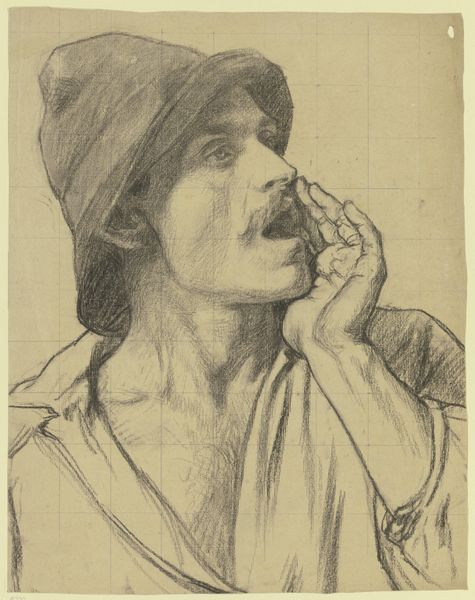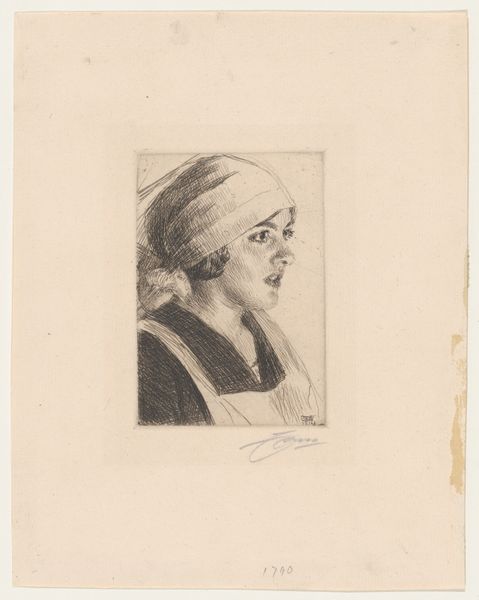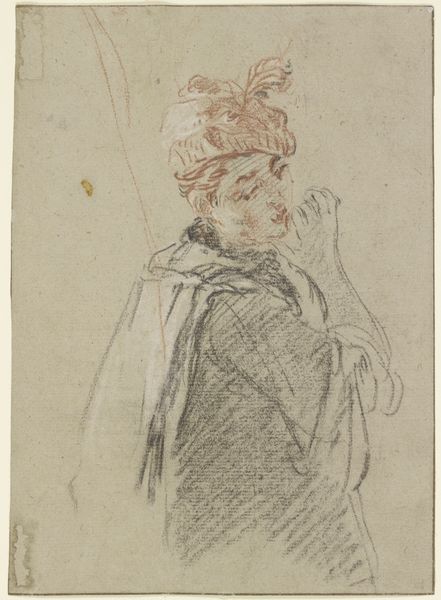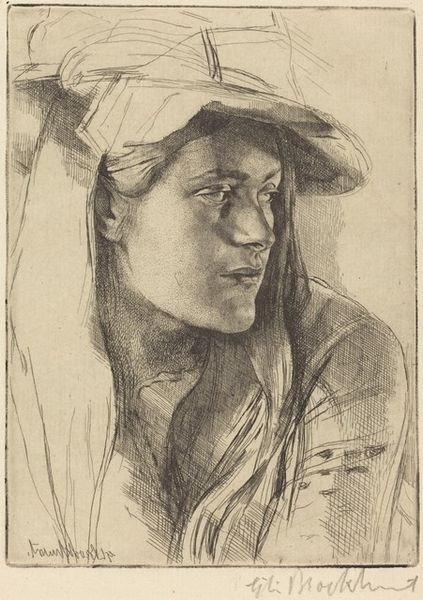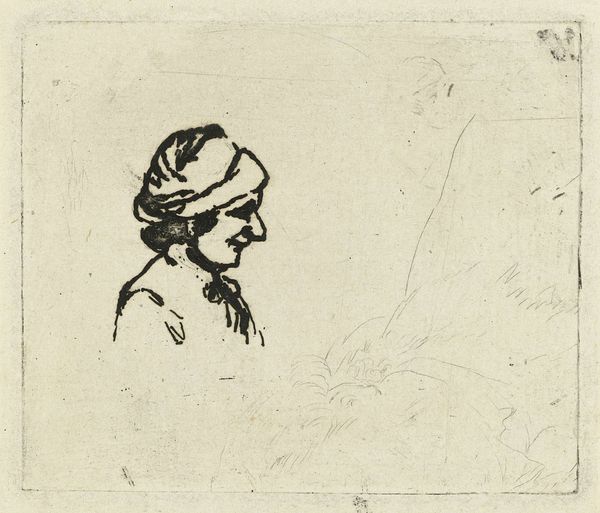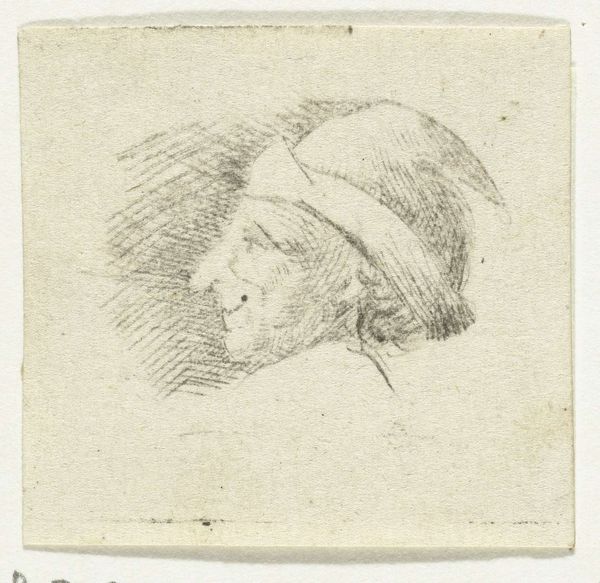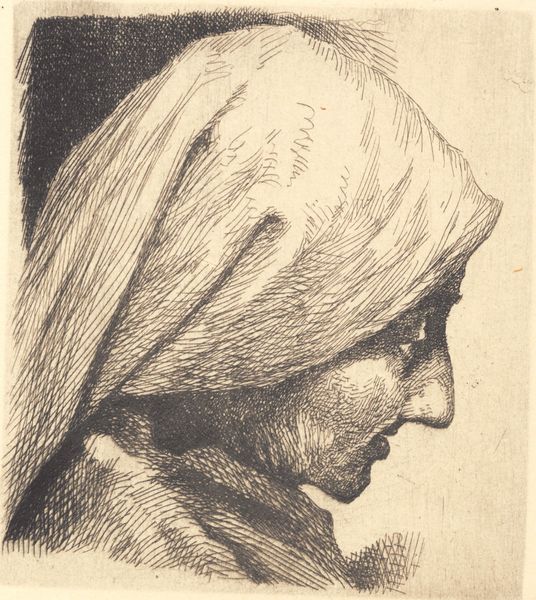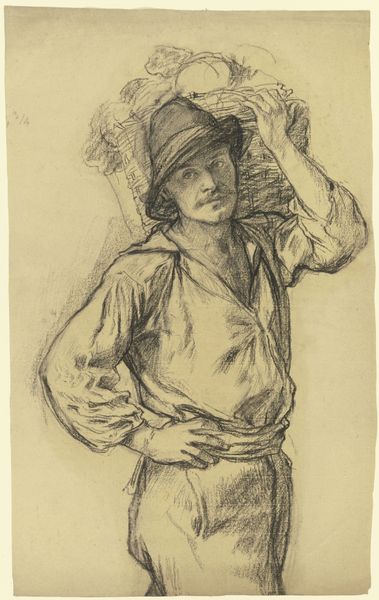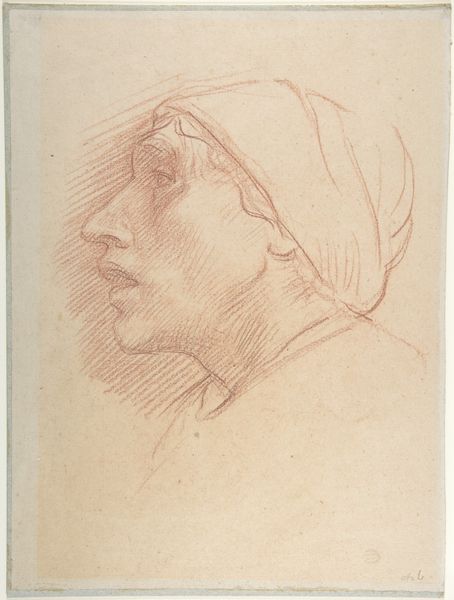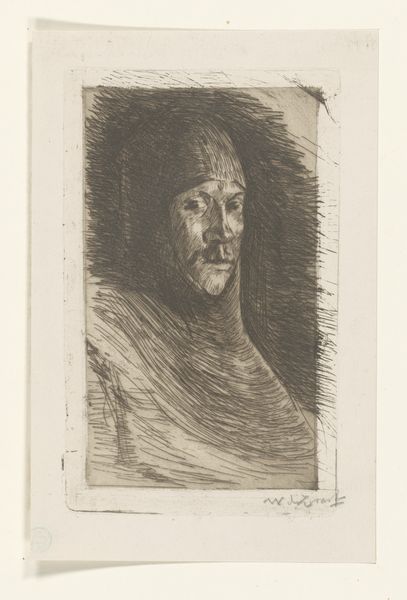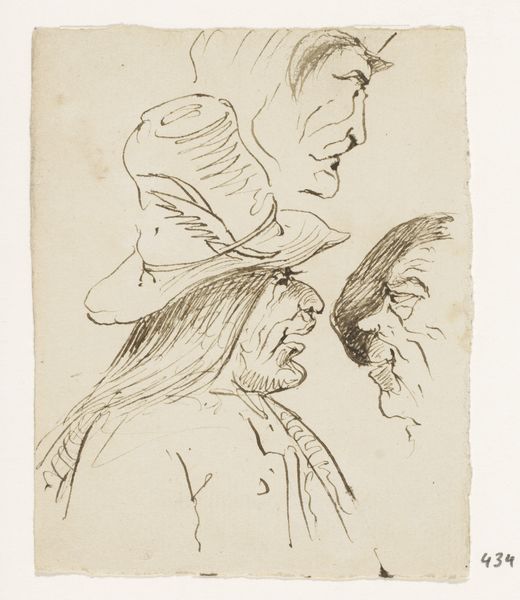
drawing, print, etching, paper
#
portrait
#
drawing
# print
#
etching
#
paper
#
portrait drawing
Dimensions: 129 × 90 mm (image/plate); 327 × 255 mm (sheet)
Copyright: Public Domain
Editor: So, this is Anders Zorn's "Gulli I," an etching from 1914. I find her gaze quite arresting – there's a mix of vulnerability and defiance in her eyes. What do you see in this piece, especially considering it's from right before the first World War? Curator: That gaze is everything, isn't it? Knowing Zorn's typical subject matter often leaned towards society figures and nudes, a portrait like this invites us to consider a different stratum of society, especially with the headscarf and modest dress. How does that affect our perception, knowing it's 1914? What kind of "woman question" might Zorn be engaging with here, intentionally or otherwise? Editor: That's interesting. I hadn't considered the social context that deeply. Does her somewhat averted gaze speak to a specific challenge faced by women at that time, maybe a kind of enforced humility? Curator: It's possible. Etchings, due to their reproducibility, were often disseminated widely, making them a vehicle for circulating ideas. So, we have to ask: What stories about women were being told, and how does this portrait challenge or reinforce those narratives? Consider also the rapid changes of the era – suffragism, industrialization. Is this a portrayal of a woman caught between tradition and modernity? Editor: It’s like her gaze is searching, questioning. I see a woman aware of a changing world, trying to find her place. The simplicity of the etching feels so honest, stripped of glamour. Curator: Exactly! The etching medium itself speaks to a certain accessibility, contrasting with the opulent oil paintings of the elite. Perhaps Zorn, consciously or not, is engaging with the social and political ferment, prompting us to reconsider who gets seen, and how. It's a fascinating glimpse into the complexities of identity at a pivotal moment. Editor: This has given me a whole new perspective on understanding art beyond the aesthetic. Thanks for pointing that out! Curator: It is precisely that contextual lens which gives the work its enduring power to speak to us across time.
Comments
No comments
Be the first to comment and join the conversation on the ultimate creative platform.
